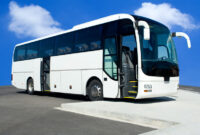Vacations for single senior citizens offer a unique opportunity for relaxation, exploration, and personal growth. This guide explores various vacation types, destinations, and planning considerations specifically tailored to the needs and preferences of this demographic, ensuring a safe, enjoyable, and enriching travel experience. We delve into practical advice on budgeting, health considerations, and maximizing social interaction during solo travel, empowering single seniors to embark on fulfilling adventures.
From choosing the right activity level and destination to addressing concerns about safety and budgeting, this comprehensive resource provides valuable insights and practical strategies for planning a memorable and worry-free vacation. Whether you’re dreaming of a relaxing beach getaway or an adventurous cultural tour, we aim to equip you with the knowledge and confidence to make the most of your well-deserved break.
Travel Considerations
Planning a vacation requires careful consideration, especially for single senior citizens who may have unique needs and preferences. Thorough preparation ensures a smoother, safer, and more enjoyable trip. This section details essential travel documents, the importance of insurance, and a helpful packing checklist.
Essential Travel Documents and Preparations
Before embarking on any journey, single senior citizens should meticulously gather and organize their travel documents. This proactive approach minimizes potential stress and complications during the trip. A well-organized travel binder or digital folder is highly recommended. Crucial documents include a valid passport (checking expiration dates well in advance is crucial), visa (if required for the destination), flight/cruise tickets, hotel confirmations, travel insurance policy details, and copies of all important documents kept separately from the originals. Furthermore, it’s wise to have a detailed itinerary, including flight schedules, addresses, and contact numbers for hotels and transportation services. Consider making a list of important medications and their dosages for easy reference in case of emergencies. Finally, inform your bank and credit card companies of your travel dates to prevent any issues with card usage.
The Importance of Travel Insurance and Emergency Contact Information
Travel insurance is paramount for single senior citizens. It offers financial protection against unforeseen circumstances such as medical emergencies, trip cancellations, lost luggage, and other unexpected events. Policies often cover medical expenses, repatriation costs, and even lost belongings. The level of coverage should be carefully considered based on the destination, duration of the trip, and the individual’s health status. Beyond insurance, establishing clear emergency contact information is vital. Share your itinerary with a trusted friend or family member, including contact details for your accommodation and emergency services in your destination. Consider providing a copy of your passport and travel insurance details to your emergency contact. This ensures someone is aware of your whereabouts and can assist in case of any problems.
Packing Checklist for Single Senior Citizens
Packing efficiently and thoughtfully is key to a comfortable trip. The specific items will vary depending on the type of vacation (beach vacation, city break, cruise, etc.), but a general checklist can be a helpful starting point.
- Clothing: Pack comfortable and versatile clothing items appropriate for the climate and planned activities. Consider lightweight, wrinkle-resistant fabrics. Include appropriate footwear for walking and any planned activities.
- Medications: Carry a sufficient supply of all prescription and over-the-counter medications, along with a copy of your prescriptions. Keep them in their original containers and easily accessible.
- Toiletries: Pack travel-sized toiletries to comply with airline regulations. Include any essential personal care items.
- Documents: Passport, visa (if needed), flight/cruise tickets, hotel confirmations, travel insurance details, driver’s license (if applicable), credit cards, and emergency contact information (printed and digital copies).
- Electronics: Phone, charger, adapter (if necessary), camera, and any other electronic devices.
- Other Essentials: Comfortable walking shoes, sunglasses, hat, sunscreen, insect repellent, a small first-aid kit, reading material, and any other personal items that will enhance comfort and enjoyment.
- Adapters and Converters: Check if your destination uses a different electrical voltage and plug type than your home country and pack necessary converters and adapters.
Budgeting and Planning
Planning a vacation on a budget as a single senior citizen requires careful consideration of various expenses. A well-structured budget ensures a relaxing and enjoyable trip without exceeding financial limits. This involves identifying essential and discretionary costs, exploring cost-saving options, and creating a realistic spending plan.
Creating a Realistic Budget
To create a realistic budget, start by estimating the total cost of your vacation. This includes airfare or transportation costs, accommodation, food, activities, and miscellaneous expenses. For example, a week-long trip to a popular destination like Florida might involve airfare of $500, accommodation (a budget-friendly hotel or Airbnb) of $700, food (allowing $50 per day) of $350, activities (including entrance fees and tours) of $200, and miscellaneous expenses (souvenirs, transportation within the destination) of $150. This brings the total estimated cost to $1900. Remember to build in a buffer for unexpected expenses, perhaps 10-15% of the total. In this case, an additional $190-$285 would be a prudent addition, resulting in a total budget of $2090-$2185. Adjust these figures based on your chosen destination and preferred level of luxury. Use budgeting apps or spreadsheets to track expenses and ensure you stay within your planned budget.
Cost-Saving Strategies for Travel and Accommodation
Several strategies can significantly reduce vacation costs. Consider traveling during the off-season or shoulder season to benefit from lower airfare and accommodation rates. For instance, visiting a beach destination in the spring or fall often yields better deals than during peak summer months. Booking flights and accommodations well in advance can also secure better prices. Utilizing travel websites and comparison tools allows you to identify the most cost-effective options. Exploring alternative accommodation options, such as vacation rentals or guesthouses, can be more affordable than hotels. Additionally, opting for self-catering meals instead of eating out every day can substantially reduce food costs. Packing light minimizes baggage fees, and taking advantage of free activities, such as hiking or visiting parks, lowers entertainment expenses.
Sample Itinerary: A Week-Long Vacation in Charleston, South Carolina
This itinerary provides a framework for a week-long trip to Charleston, South Carolina, focusing on budget-conscious choices.
| Day | Activity | Estimated Cost |
|---|---|---|
| Day 1 | Arrival in Charleston, check into Airbnb ($100/night), explore the French Quarter on foot. | $100 |
| Day 2 | Visit Rainbow Row, stroll along the waterfront, picnic lunch ($15). | $15 |
| Day 3 | Free walking tour of historic Charleston, evening at a local pub ($30). | $30 |
| Day 4 | Ferry to Fort Sumter ($30), afternoon exploring Waterfront Park. | $30 |
| Day 5 | Visit the Charleston City Market (souvenirs), enjoy a casual dinner ($40). | $40 |
| Day 6 | Day trip to Sullivan’s Island (public transportation $10), relax on the beach. | $10 |
| Day 7 | Departure from Charleston. | $0 |
This sample itinerary demonstrates how a fulfilling week-long vacation can be planned while keeping expenses within a reasonable range. Remember that costs can vary depending on personal preferences and choices. The total estimated cost for this itinerary, excluding airfare, is approximately $225. This highlights how careful planning and selection of activities can significantly impact the overall vacation budget.
Accommodation Options
Choosing the right accommodation is crucial for a relaxing and enjoyable vacation, especially for single senior citizens. Factors such as accessibility, amenities, and location play a significant role in determining the overall experience. This section will explore various accommodation options, highlighting their advantages and disadvantages for this specific demographic.
Several accommodation types cater to the needs of single senior travelers, each offering a unique set of benefits and drawbacks. Careful consideration of individual preferences and priorities is essential in selecting the most suitable option. Accessibility features, proximity to medical services, and the availability of assistance are all key factors to consider.
Accommodation Comparison for Single Senior Citizens
The following table compares four common accommodation types, considering their suitability for single senior travelers. Cost ranges are approximate and can vary significantly based on location, time of year, and specific amenities.
| Accommodation Type | Pros | Cons | Average Cost Range (per night) |
|---|---|---|---|
| Hotels | Wide availability, various amenities (pools, restaurants), often centrally located, generally accessible. | Can be impersonal, may lack kitchen facilities, single occupancy rates can be high. | $100 – $300+ |
| Resorts | All-inclusive options available, numerous amenities (spas, golf courses), often located in scenic areas, may offer assisted living services. | Can be expensive, may be isolated from local attractions, may not cater to specific accessibility needs unless explicitly stated. | $200 – $500+ |
| Cruise Ships | All-inclusive packages, structured itineraries, entertainment onboard, accessible cabins available on some lines. | Can be crowded, potential for seasickness, limited independent exploration, may not be suitable for those with mobility issues. | $150 – $500+ per day (including meals and activities) |
| Vacation Rentals (e.g., Airbnb, VRBO) | More privacy, often kitchen facilities, potential for cost savings, can be located in quieter areas. | May lack amenities, accessibility features may vary widely, may require more self-sufficiency, security can be a concern. | $75 – $300+ |
Activities and Entertainment
Planning engaging and appropriate activities is crucial for a fulfilling senior solo vacation. The goal is to create a balanced itinerary that caters to individual preferences while respecting physical limitations and ensuring a memorable experience. This involves carefully considering the destination’s offerings and aligning them with the traveler’s interests and capabilities.
Age-Appropriate Activities and Entertainment Options
A wide range of activities can cater to the diverse interests and physical abilities of single senior travelers. Destinations offer various options, ensuring a personalized and enjoyable experience. For instance, a relaxing cruise might be ideal for someone seeking tranquility and onboard entertainment, while a guided walking tour through a historical city could suit a more active individual. Similarly, a tranquil spa retreat might appeal to those prioritizing relaxation and rejuvenation.
Matching Activities to Individual Interests and Physical Capabilities
It’s vital to select activities that resonate with the individual’s passions and physical fitness level. A nature enthusiast might prefer hiking in a national park (perhaps opting for shorter, less strenuous trails), while someone with an artistic bent might choose to attend art workshops or visit museums. Those with mobility challenges could benefit from wheelchair-accessible tours or opting for activities that involve less physical exertion, such as attending cultural performances or enjoying leisurely boat rides. Prioritizing comfort and safety is paramount, allowing for flexibility and adjustments as needed. For example, a senior with limited mobility might enjoy a scenic train journey instead of a demanding hike.
Balancing Relaxation and Exploration
A successful vacation plan expertly blends periods of rest and rejuvenation with opportunities for exploration and discovery. This prevents burnout and allows for a more fulfilling experience. A typical day might involve a morning spent exploring a local market followed by an afternoon relaxing by a pool or indulging in a spa treatment. Evenings could be dedicated to attending a cultural performance or enjoying a quiet dinner at a local restaurant. The key is to create a flexible itinerary that allows for spontaneous adjustments based on the traveler’s energy levels and preferences. This could involve incorporating downtime in the schedule for relaxation or adjusting activity intensity as needed. For example, a senior might choose to spend a leisurely afternoon reading a book in a park after a morning of sightseeing.
Final Conclusion
Planning a vacation as a single senior citizen doesn’t have to be daunting. By carefully considering your preferences, budget, and health needs, and utilizing the resources and strategies outlined in this guide, you can create a personalized travel experience that’s both fulfilling and enriching. Remember to prioritize safety, embrace the opportunity for social connection, and focus on enjoying the journey. Your well-deserved vacation awaits!



